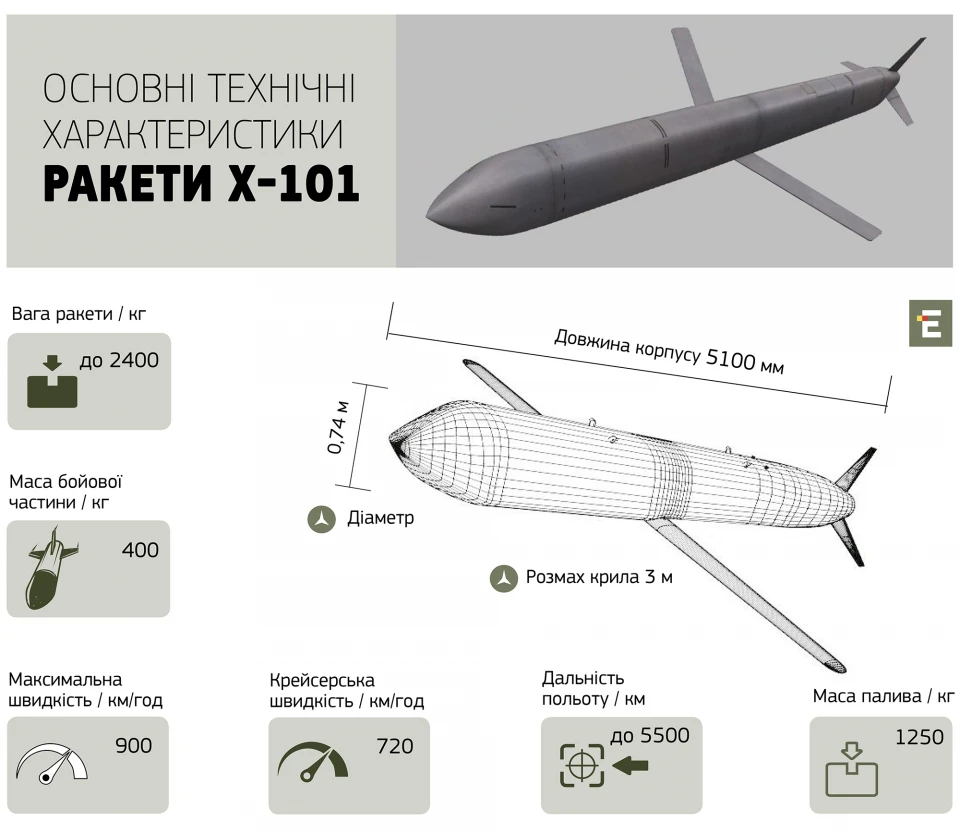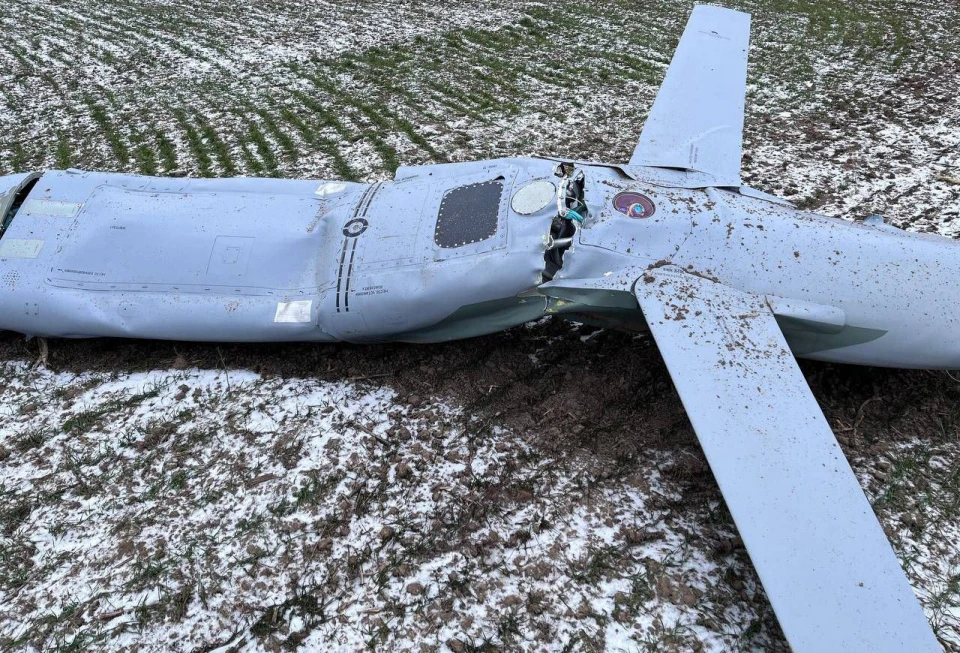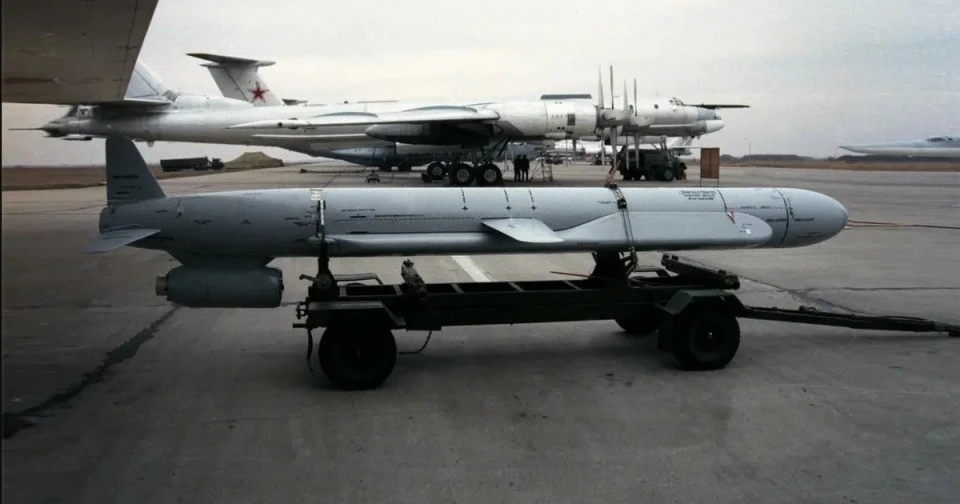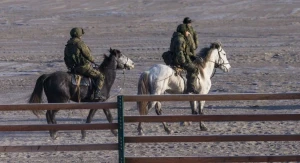
Kh-101 cruise missiles: how Ukraine's army combats them – characteristics, cost, and use
Russian missile attacks have become a regular part of life in Ukraine, with the Kh-101 cruise missile being a key weapon in these attacks. Typically, the aggressor unleashes dozens of Kh-101 missiles on Ukrainian targets in a single assault
In this article, Espreso delves into the technical aspects of the missile, the current stockpile held by the Russians, and Ukraine's strategies to counter this threat.
Here's a glimpse of what you'll discover:
- What is the Kh-101 missile, and what are its features?
- The missile's technical specifications.
- How the Kh-101 functions.
- How Ukraine's Armed Forces intercept and neutralize these missiles.
- Insights into the quantity of Kh-101 missiles in Russia and the potential to halt their production.
What is the Kh-101 missile, and what are its features?
The Kh-101 is a strategic air-to-ground cruise missile designed to reduce radar visibility. It was developed by the Russian design bureau "Raduga" from 1995 to 2013. This missile has been in service for a decade and was tested in Syria, mainly for attacks against civilian targets. There's also a version of this missile equipped with a nuclear warhead, known as the Kh-102.
The missile houses its engine internally and utilizes a combined guidance system. It starts with an inertial system with optical-electronic correction and switches to a homing head in the final phase, allowing for mid-flight target adjustments, a capability absent in earlier-generation missiles.
Kh-101 missiles are air-launched and are deployed from Tu-95MS and Tu-160 bombers, which can carry 8-12 missiles each. With a flight range exceeding 5,500 km, they can be launched from the Caspian Sea.
Official tests have shown that the Kh-101 has a circular probable deviation (CED) of 7 meters at a range of 5,500 km. In theory, it can accurately hit moving targets with a precision of up to 10 meters. However, claims of "high accuracy" by Russian missiles are often seen as propaganda. The actual use of Kh-101 missiles in Ukraine revealed discrepancies in the declared effectiveness, primarily due to outdated electronic components dating back to the 1960s.
Ukrainian experts analyzed the guidance and navigation systems of Kh-55 cruise missiles, as well as their variants, Kh-555 and Kh-101, concluding that the "modern" guidance systems were developed in the 1960s and 1970s by Soviet enterprises such as the plants in Voronezh and Minsk.
Regarding the cost of the missiles, estimates vary significantly. Forbes Ukraine estimated one Kh-101 missile at $13 million, calculated as part of Russia's expenses during shelling in Ukraine. However, Defense Express estimates the cost of this weaponry for Russia to be much lower, at $1.2 million per missile.

Tactical and technical characteristics
- Length: 7.45 meters
- Diameter: 0.74 meters
- Wingspan: 3 meters
- Weight: Up to 2,400 kg
- Warhead weight: 400 kg
- Fuel mass: 1,250 kg
- Maximum speed: 900 km/h
- Cruising speed: 720 km/h
- Flight range: Up to 5,500 km
- Navigation: Relies on the GLONASS system.
How the Kh-101 missile operates
The Kh-101 missile relies on an inertial guidance system. During its launch, the missile knows its exact coordinates and then calculates its position based on factors like speed, time, direction, and more. This system, as described in Defense Express, is considered somewhat imprecise due to errors that occur during its operation. Even with the use of the latest technology, these errors can amount to approximately 3 meters per minute of flight. This means that for a missile in the air for three hours, the error could exceed half a kilometer.
Additionally, the cruise missile employs satellite navigation, but its reliability can be affected by electronic warfare equipment that disrupts the signals.
Furthermore, cruise missiles used to navigate without satellite assistance using a system called TERCOM. Essentially, TERCOM operates by having the missile scan the terrain below it with a radio altimeter, collecting data about the landscape. These data are then compared to a reference model stored in the missile's memory, which contains coordinates. In simple terms, the missile "knows" that at a specific time, it should be in an area with particular terrain features. By comparing the surface with the reference guidance system, it can update its current coordinates and correct any errors.
However, TERCOM works well in regions with distinctive, easily recognizable terrain and elevation changes. Its effectiveness diminishes in flat areas. As a result, the DSMAC system was developed, which compares images of areas with recognizable objects, such as reservoirs or road junctions. High-quality images, both reference and in-flight, are required for this system to work effectively. Importantly, DSMAC does not function well at night, making the Kh-101, equipped with this system, less effective during nighttime operations.
How the Armed Forces intercept Kh-101 missiles
The Kh-101 missiles are less accurate at night, but the invaders often launch attacks during this time. This might be because the aggressors lack up-to-date information about Ukrainian territories. During the day, the Armed Forces effectively neutralize cruise missiles using portable anti-aircraft missile systems. Soldiers need to visually identify the Kh-101 missile to target it with MANPADS (Man-Portable Air-Defense Systems).
However, cruise missiles can also be intercepted at dusk. On August 30, Lieutenant General Serhiy Nayev, the commander of the United Forces of the Ukrainian Armed Forces, shared a remarkable video showing the destruction of a Kh-101 missile using Stinger MANPADS.
There have been instances where the Kh-101 was even shot down with small arms. In December, a mobile fire team successfully targeted a low-altitude missile using heavy machine guns and machine-gun fire.
Ukraine's air defense has been highly effective against Russian missiles. To evade Ukrainian air defense, aggressors attempted to upgrade the Kh-101. Starting from around the end of November 2022, Ukrainian Defense Forces noticed the use of L-504 devices for shooting radar traps on the missile wreckage. Subsequently, heat traps were added to divert the missiles from portable air defense systems during flight.
Despite these efforts, Ukrainian anti-aircraft defense continues to excel against cruise missiles. During a major shelling on November 15, 2022, Russia launched nearly a hundred missiles, mostly Kh-101, at Ukrainian infrastructure. Over 70 of these missiles were intercepted. In Kyiv, 18 out of 21 missiles were shot down.

Ukrainian air defense received a significant boost with the introduction of Western air defense systems. In April 2023, Yuriy Ihnat, spokesperson for the Air Force of the Ukrainian Armed Forces, described the Kh-101 as an easy target for the Patriot complex. For instance, on May 9, 23 out of 25 missiles were shot down, and on June 13, air defense successfully intercepted all 13 missiles. On April 28, 2023, air defense's effectiveness remained high, with 21 out of 23 missiles being shot down. However, there was a tragic incident in Uman, Cherkasy region, where a missile struck a high-rise building, resulting in 23 casualties, including 5 children. In Dnipro, a 2-year-old girl and a 31-year-old woman also lost their lives due to a missile impact.
How many Kh-101 missiles does Russia have, and can their production be stopped?
Russian propaganda claims that the Kh-101 was produced using advanced Russian technology and equipment. However, this assertion has been repeatedly contradicted by various sources.
According to The New York Times, much of Russia's modern military equipment, including items like encrypted radios and laser rangefinders, is built using Western semiconductors. Despite sanctions aimed at halting production, Russia continues to manufacture these missiles.
An article suggests that Russia's ongoing production of advanced guided missiles like the Kh-101 implies that they have found ways to acquire semiconductors and materials despite sanctions, or they had significant stockpiles of components before the war.
Oleh Katkov, the editor-in-chief of Defense Express, pointed out that Russia relies on American components for producing Kh-101 missiles, which it purchases on the civilian market. Investigating the source of these components in Russia could complicate further cruise missile production. In August 2023, Andriy Yermak, the head of the Office of the President of Ukraine, reported finding about 30 foreign microcircuits in Kh-101 missiles manufactured that year.
Yermak mentioned, "We are gathering information, collaborating with our partners, and maintaining regular communication with them. Our partner governments also engage with microcircuit manufacturers and suppliers."
In 2022, Russia produced more than 240 Kh-101 missiles. At the start of 2023, Vadym Skibitsky, a representative of the Main Directorate of Intelligence of the Ministry of Defense, stated that Russia was manufacturing 30 Kh-101 cruise missiles each month. By May, Defense Express reported an increased production rate of 35 missiles per month.
The fact that Russia uses newly manufactured cruise missiles for attacks has both positive and negative implications for Ukraine, according to military analysts. On the positive side, Russia has depleted its stockpile of pre-war missiles. As noted by the Air Force of the Armed Forces of Ukraine, the Russians had used their strategic missile stockpile on transformer booths. Consequently, the Kh-101 missiles used for attacks are fresh from the factory. However, the downside for Ukraine is that despite sanctions, Russia has maintained its ability to produce cruise missiles.
- News














































